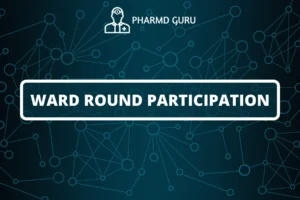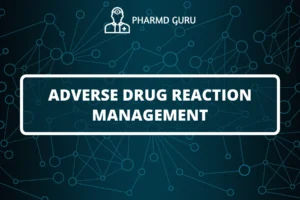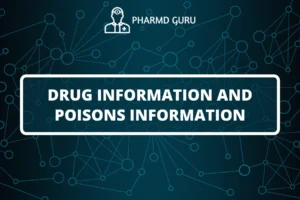Clinical pharmacists play a crucial role in ensuring the safe and effective use of medications in patient care. One of their key responsibilities is drug therapy monitoring, which involves activities such as medication chart review, clinical review, and pharmacist interventions. In this article, we will explore the daily activities of a clinical pharmacist related to drug therapy monitoring, highlighting the importance of their role in optimizing medication therapy.
SCROLL DOWN TO THE BOTTOM OF THE PAGE FOR ACTUAL NOTES
TABLE OF CONTENTS:
- Introduction
- Medication Chart Review
- Clinical Review
- Pharmacist Interventions
- Collaborative Approach
- Ensuring Medication Safety
- Patient Education and Counseling
- Integration of Technology
1. Introduction
Clinical pharmacists are integral members of the healthcare team, working alongside physicians, nurses, and other healthcare professionals to provide comprehensive pharmaceutical care. Their daily activities revolve around ensuring the appropriate use of medications and minimizing the risks associated with drug therapy.
2. Medication Chart Review
One of the primary tasks of a clinical pharmacist is to conduct a thorough review of patients’ medication charts. This involves assessing the accuracy and completeness of medication orders, verifying dosages, checking for potential drug interactions, and identifying any medication-related issues or discrepancies.
3. Clinical Review
Clinical pharmacists perform a comprehensive review of patients’ medical conditions, laboratory results, and other relevant clinical information. This enables them to evaluate the appropriateness and effectiveness of the prescribed medications, identify any potential contraindications or drug-drug interactions, and make recommendations for therapeutic adjustments if necessary.
4. Pharmacist Interventions
Based on their medication chart review and clinical assessment, clinical pharmacists may intervene to optimize drug therapy. They communicate their recommendations to the healthcare team, which may include adjusting dosages, switching medications, or suggesting alternative treatment options. These interventions are aimed at improving medication safety, efficacy, and patient outcomes.
5. Collaborative Approach
Drug therapy monitoring requires close collaboration and communication with other healthcare professionals. Clinical pharmacists actively participate in interdisciplinary healthcare teams, attending rounds and meetings to discuss patients’ medication-related needs, provide expertise on medication management, and contribute to treatment decision-making.
6. Ensuring Medication Safety
A key aspect of drug therapy monitoring is ensuring medication safety. Clinical pharmacists play a crucial role in identifying and preventing medication errors, adverse drug events, and potential side effects. They monitor patients’ responses to medications, assess for any signs of toxicity or therapeutic failure, and take appropriate actions to address these issues.
7. Patient Education and Counseling
Clinical pharmacists also have an important role in patient education and counseling. They provide comprehensive medication information to patients, explaining the purpose, dosage, potential side effects, and precautions associated with their medications. By promoting medication adherence and addressing patients’ concerns, clinical pharmacists contribute to better treatment outcomes.
8. Integration of Technology
In today’s healthcare landscape, technology plays a vital role in supporting drug therapy monitoring. Clinical pharmacists utilize electronic health records (EHRs) and clinical decision support systems to access patient information, perform drug-drug interaction checks, and receive alerts or reminders for medication-related issues. This integration of technology enhances the efficiency and accuracy of their daily activities.
ACTUAL NOTES




